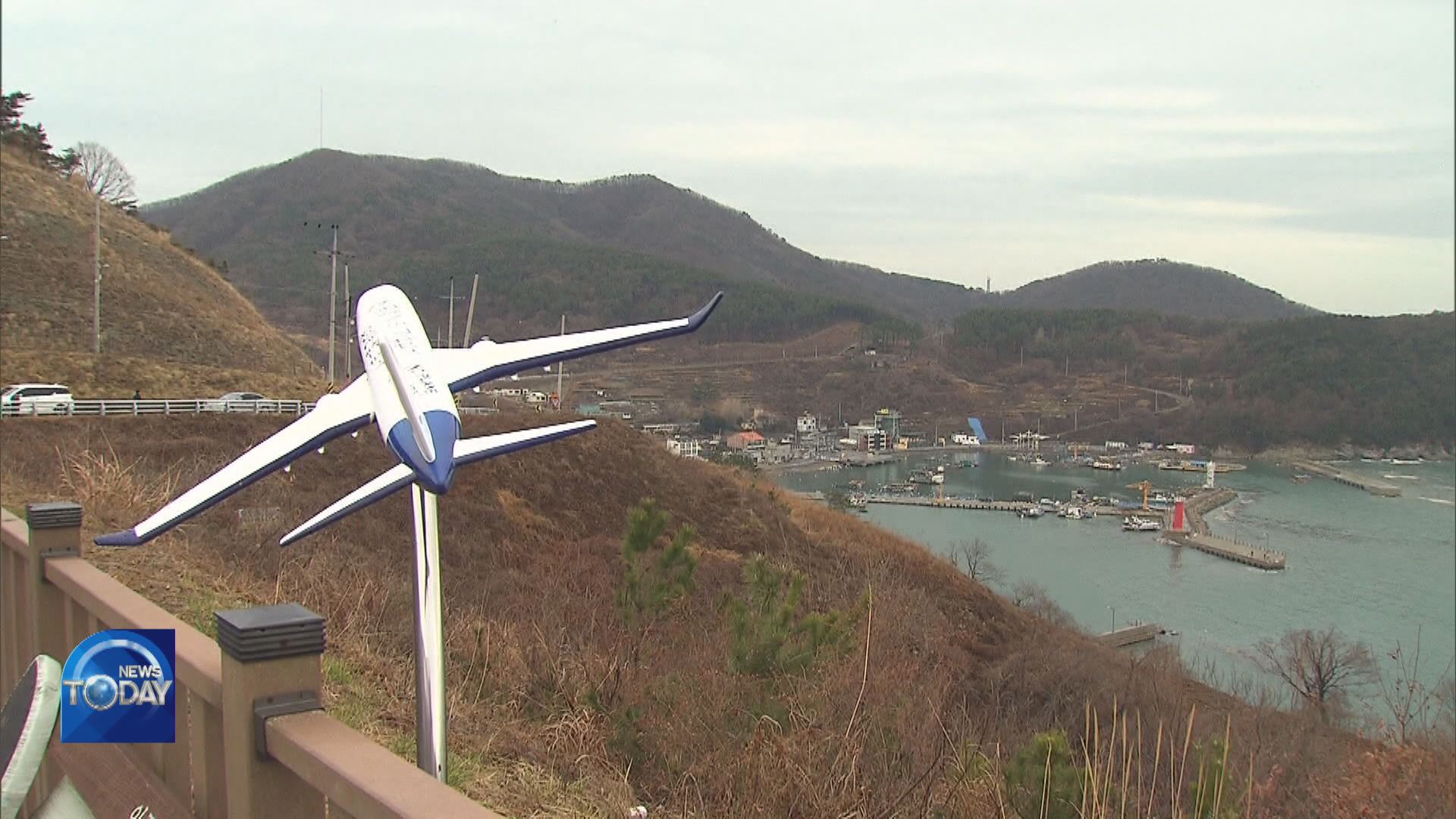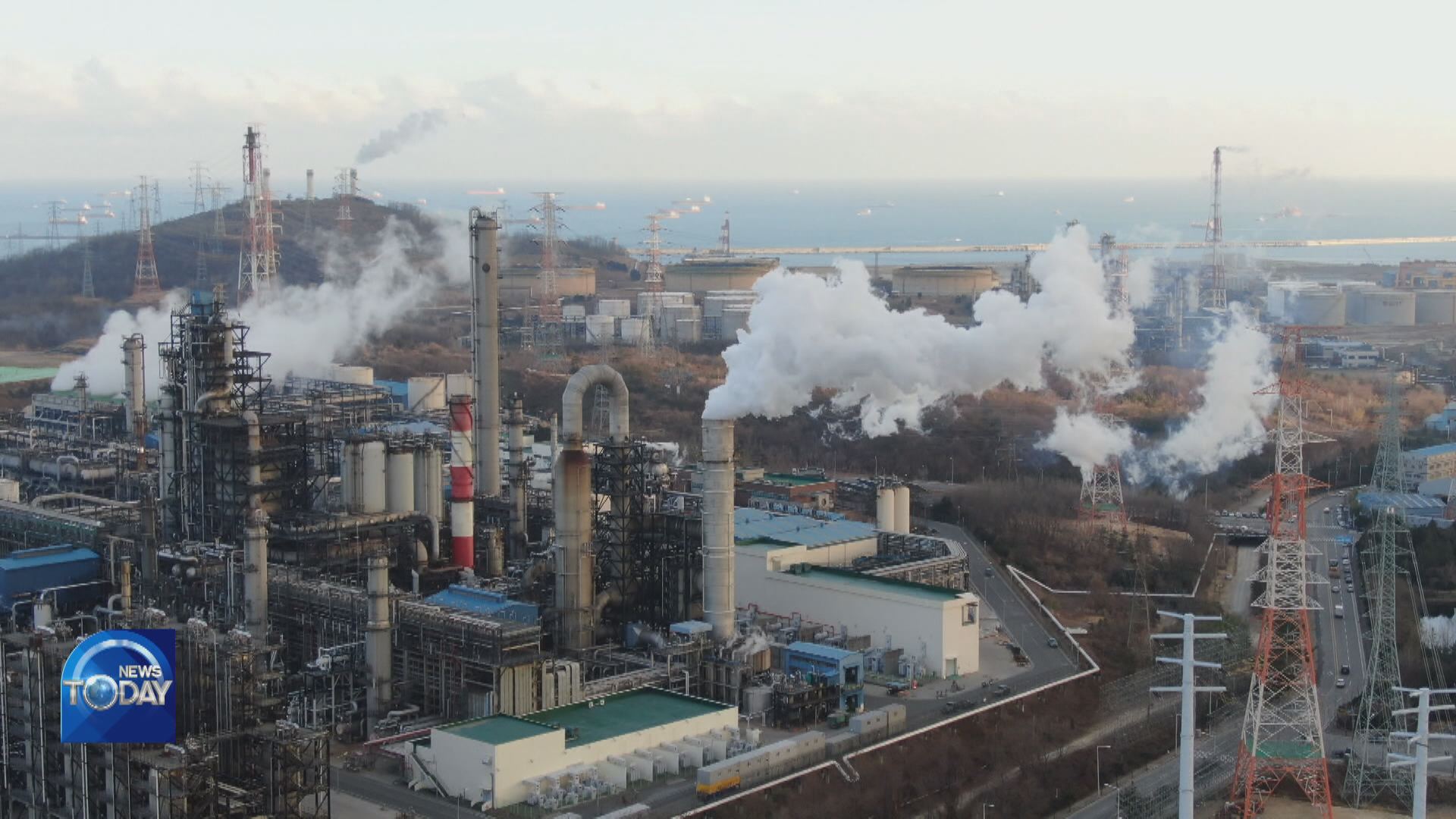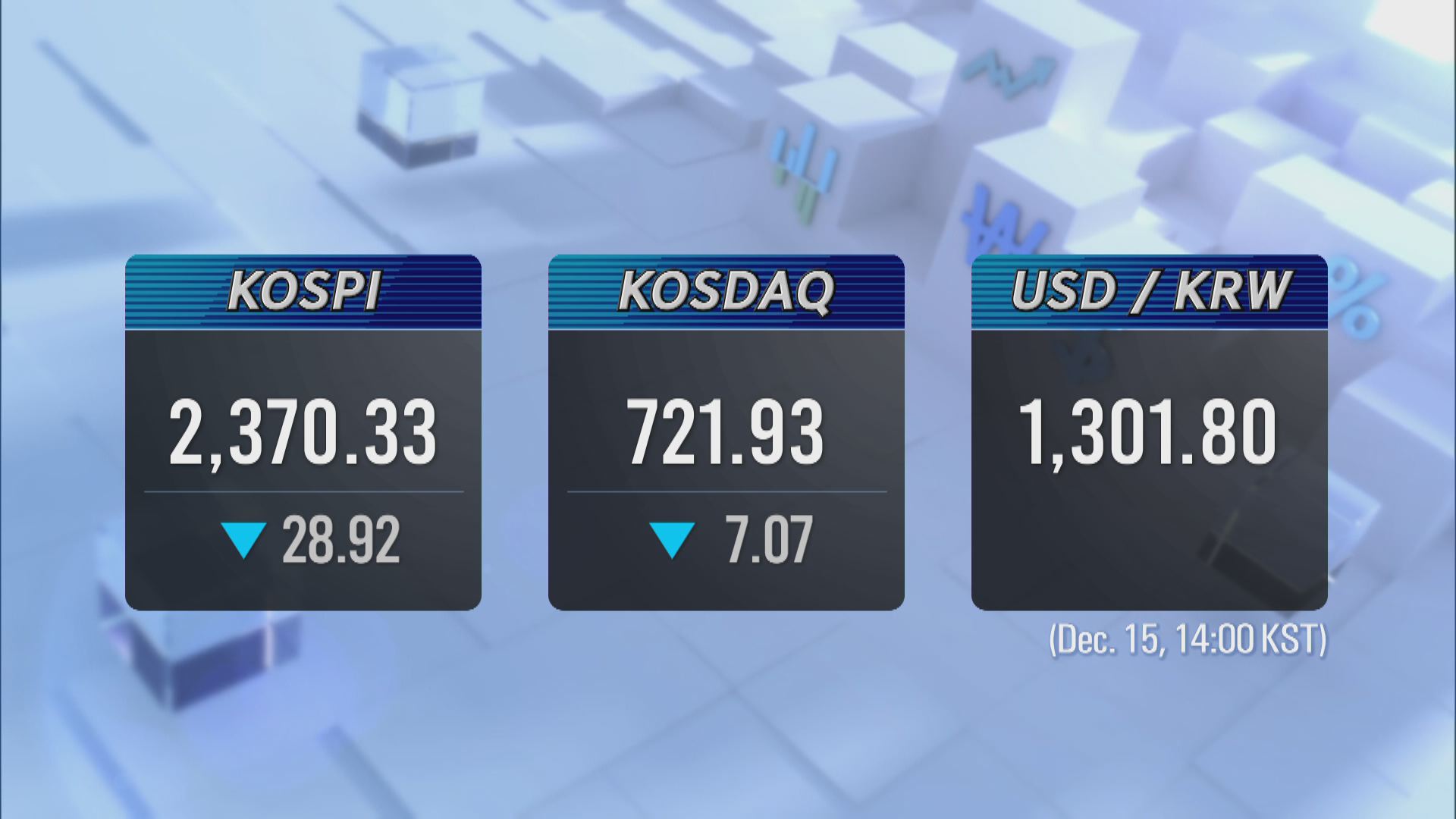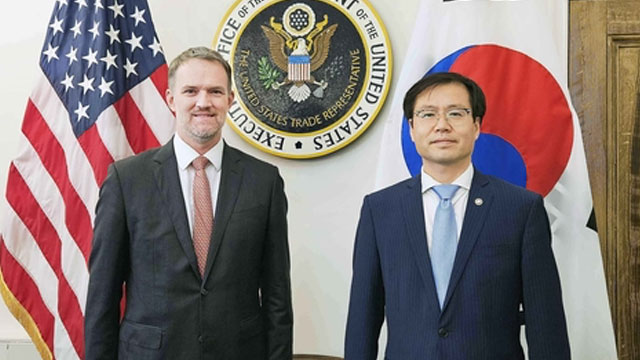BUSAN’S FLOATING AIRPORT PLAN
입력 2022.12.15 (15:07)
수정 2022.12.15 (16:45)
읽어주기 기능은 크롬기반의
브라우저에서만 사용하실 수 있습니다.
[Anchor Lead]
The city of Busan proposed to build a floating airport, where its runway would float in the sea, in order to complete the construction of the Gadeok New Airport before the 2030 World Expo. As the first of its kind, the plan will allow the airport to be completely built by 2029, which is 6 years earlier than the originally planned timeline, but hurdles remain ahead due to astronomical construction costs and safety concerns.
[Pkg]
Gadeok New Airport in Busan was pointed out as a key facility vital in improving accessibility when Busan applied for a bid to host the 2030 World Expo. But a feasibility survey conducted by the Ministry of Land, Infrastructure and Transport has found that the airport would be completed no earlier than 2035 provided it be built using a land reclamation method. Busan City rushed to set up an offshore smart city task force consisting of the public and private sectors to conduct a study. Four months later, the task force came up with a plan to build a floating airport, whereby only the airport terminal would be buried, while its runway would float in the sea. Busan City says the airport can be completed by 2029 if the area of burial is reduced to a third.
[Soundbite] Park Heong-joon(Busan Mayor) : "The floating construction method takes less time than the land reclamation method. It is also eco-friendly and allows for easy expansion."
In 2001, Japan's airport investigation committee conducted a two-year experiment of airplane takeoff and landing on a 1-km floating runway. It demonstrated that building a 4-km floating airport was technically feasible.
[Soundbite] Park Ku-yong(Offshore smart city taskforce) : "From an engineering standpoint, we believe the floating construction method is safe and feasible technologically speaking."
However, construction costs reach 15 trillion won, and concerns remain whether floating airports, none of which actually exist in the world, can withstand typhoons and other safety hazards. Busan City has decided to submit its plan to the transport ministry and request its deliberation. The idea to build a floating airport, which would be the first of its kind in the world if materialized, will likely continue to cause controversy despite a shorter construction period, as astronomical construction costs and safety concerns remain.
The city of Busan proposed to build a floating airport, where its runway would float in the sea, in order to complete the construction of the Gadeok New Airport before the 2030 World Expo. As the first of its kind, the plan will allow the airport to be completely built by 2029, which is 6 years earlier than the originally planned timeline, but hurdles remain ahead due to astronomical construction costs and safety concerns.
[Pkg]
Gadeok New Airport in Busan was pointed out as a key facility vital in improving accessibility when Busan applied for a bid to host the 2030 World Expo. But a feasibility survey conducted by the Ministry of Land, Infrastructure and Transport has found that the airport would be completed no earlier than 2035 provided it be built using a land reclamation method. Busan City rushed to set up an offshore smart city task force consisting of the public and private sectors to conduct a study. Four months later, the task force came up with a plan to build a floating airport, whereby only the airport terminal would be buried, while its runway would float in the sea. Busan City says the airport can be completed by 2029 if the area of burial is reduced to a third.
[Soundbite] Park Heong-joon(Busan Mayor) : "The floating construction method takes less time than the land reclamation method. It is also eco-friendly and allows for easy expansion."
In 2001, Japan's airport investigation committee conducted a two-year experiment of airplane takeoff and landing on a 1-km floating runway. It demonstrated that building a 4-km floating airport was technically feasible.
[Soundbite] Park Ku-yong(Offshore smart city taskforce) : "From an engineering standpoint, we believe the floating construction method is safe and feasible technologically speaking."
However, construction costs reach 15 trillion won, and concerns remain whether floating airports, none of which actually exist in the world, can withstand typhoons and other safety hazards. Busan City has decided to submit its plan to the transport ministry and request its deliberation. The idea to build a floating airport, which would be the first of its kind in the world if materialized, will likely continue to cause controversy despite a shorter construction period, as astronomical construction costs and safety concerns remain.
■ 제보하기
▷ 카카오톡 : 'KBS제보' 검색, 채널 추가
▷ 전화 : 02-781-1234, 4444
▷ 이메일 : kbs1234@kbs.co.kr
▷ 유튜브, 네이버, 카카오에서도 KBS뉴스를 구독해주세요!
- BUSAN’S FLOATING AIRPORT PLAN
-
- 입력 2022-12-15 15:07:36
- 수정2022-12-15 16:45:10

[Anchor Lead]
The city of Busan proposed to build a floating airport, where its runway would float in the sea, in order to complete the construction of the Gadeok New Airport before the 2030 World Expo. As the first of its kind, the plan will allow the airport to be completely built by 2029, which is 6 years earlier than the originally planned timeline, but hurdles remain ahead due to astronomical construction costs and safety concerns.
[Pkg]
Gadeok New Airport in Busan was pointed out as a key facility vital in improving accessibility when Busan applied for a bid to host the 2030 World Expo. But a feasibility survey conducted by the Ministry of Land, Infrastructure and Transport has found that the airport would be completed no earlier than 2035 provided it be built using a land reclamation method. Busan City rushed to set up an offshore smart city task force consisting of the public and private sectors to conduct a study. Four months later, the task force came up with a plan to build a floating airport, whereby only the airport terminal would be buried, while its runway would float in the sea. Busan City says the airport can be completed by 2029 if the area of burial is reduced to a third.
[Soundbite] Park Heong-joon(Busan Mayor) : "The floating construction method takes less time than the land reclamation method. It is also eco-friendly and allows for easy expansion."
In 2001, Japan's airport investigation committee conducted a two-year experiment of airplane takeoff and landing on a 1-km floating runway. It demonstrated that building a 4-km floating airport was technically feasible.
[Soundbite] Park Ku-yong(Offshore smart city taskforce) : "From an engineering standpoint, we believe the floating construction method is safe and feasible technologically speaking."
However, construction costs reach 15 trillion won, and concerns remain whether floating airports, none of which actually exist in the world, can withstand typhoons and other safety hazards. Busan City has decided to submit its plan to the transport ministry and request its deliberation. The idea to build a floating airport, which would be the first of its kind in the world if materialized, will likely continue to cause controversy despite a shorter construction period, as astronomical construction costs and safety concerns remain.
The city of Busan proposed to build a floating airport, where its runway would float in the sea, in order to complete the construction of the Gadeok New Airport before the 2030 World Expo. As the first of its kind, the plan will allow the airport to be completely built by 2029, which is 6 years earlier than the originally planned timeline, but hurdles remain ahead due to astronomical construction costs and safety concerns.
[Pkg]
Gadeok New Airport in Busan was pointed out as a key facility vital in improving accessibility when Busan applied for a bid to host the 2030 World Expo. But a feasibility survey conducted by the Ministry of Land, Infrastructure and Transport has found that the airport would be completed no earlier than 2035 provided it be built using a land reclamation method. Busan City rushed to set up an offshore smart city task force consisting of the public and private sectors to conduct a study. Four months later, the task force came up with a plan to build a floating airport, whereby only the airport terminal would be buried, while its runway would float in the sea. Busan City says the airport can be completed by 2029 if the area of burial is reduced to a third.
[Soundbite] Park Heong-joon(Busan Mayor) : "The floating construction method takes less time than the land reclamation method. It is also eco-friendly and allows for easy expansion."
In 2001, Japan's airport investigation committee conducted a two-year experiment of airplane takeoff and landing on a 1-km floating runway. It demonstrated that building a 4-km floating airport was technically feasible.
[Soundbite] Park Ku-yong(Offshore smart city taskforce) : "From an engineering standpoint, we believe the floating construction method is safe and feasible technologically speaking."
However, construction costs reach 15 trillion won, and concerns remain whether floating airports, none of which actually exist in the world, can withstand typhoons and other safety hazards. Busan City has decided to submit its plan to the transport ministry and request its deliberation. The idea to build a floating airport, which would be the first of its kind in the world if materialized, will likely continue to cause controversy despite a shorter construction period, as astronomical construction costs and safety concerns remain.
이 기사가 좋으셨다면
-
좋아요
0
-
응원해요
0
-
후속 원해요
0

















이 기사에 대한 의견을 남겨주세요.